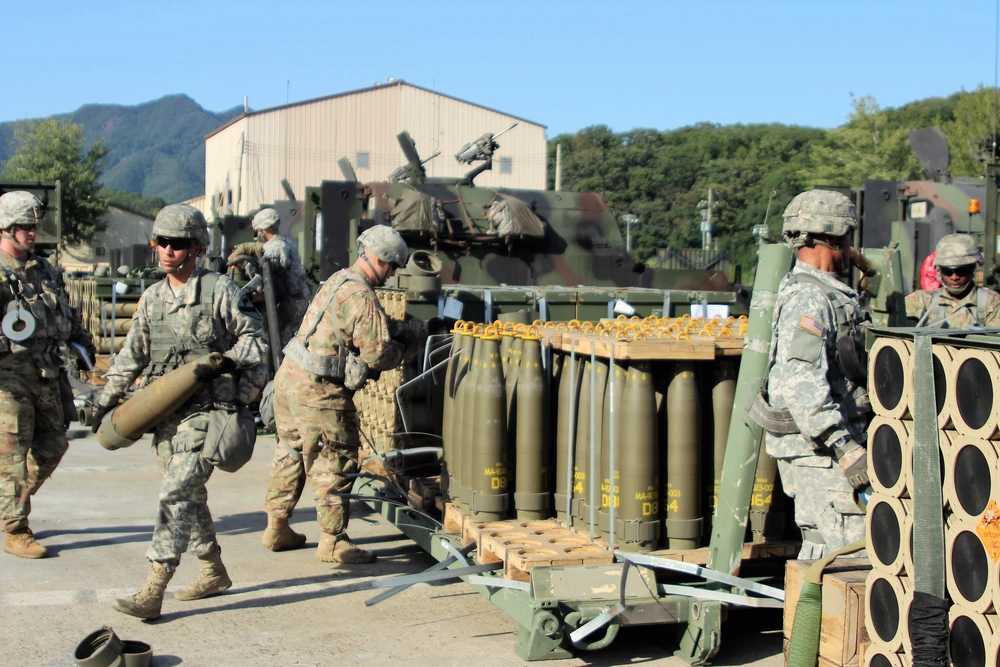
The United States is known for its military, staggering in its size, capability, and scope. The U.S. military is the most powerful fighting force in the history of humanity, maintaining global reach and influence with 750 bases in more than 80 different countries. These military ressources serve as the foundation of the strongest strategic alliance in the world between North American and European countries called NATO. However, cracks have started to emerge, and its adversaries are pushing the limits, most notably with Russia’s annexation of Crimea in 2014. Indeed, the Ukrainian war, as one of the largest conflicts of the 21st century, has exposed the weaknesses of the Western defense regime. When diagnosing the inferior position of Ukraine, many rightly point to an unwillingness among NATO, particularly the U.S., to continue providing aid to reinforce its defense system. Although this statement is true, another key factor is often overlooked. NATO is simply logistically unprepared and incapable of supplying Ukraine with the right amount of technology and weapons to stand up against Russia.
Chronic Neglect of Munitions
A Reuters investigation found that senior military officials had identified serious problems years prior to Russia’s invasion, warning since 2014 that NATO munitions stockpiles and industrial infrastructure are severely inadequate for a major conflict. Artillery has been responsible for 80% of casualties on both sides; keeping the Ukrainians supplied has been a smoking gun as far as the consequences of military industrial neglect. Just a few factories are central to U.S. production of 155mm shells, the ones used by the Ukrainian artillery, some dating back to as early as the Korean War and most receiving few upgrades and little use in recent decades. A military advisor tasked with surveying the factories in 2020, recalled that contractors and officials alike had been dreading a spike in demand; “What are we going to do if we get into a war here? We can’t just ramp this stuff up in one day. We’re in a bad situation.” Existing factories cannot meet demand and lack quality and safety standards, with fire outbreaks halting production for months at a time. That is not to mention issues procuring TNT and gunpowder, both essential components in manufacturing and firing shells. Western countries have been closing plants since the end of the Cold War, and are now reliant on imports from factories in India and China. Meanwhile, Russia has vastly expanded its plants, producing 3 times as many artillery munitions as the U.S. and Europe combined and firing a year’s worth of European artillery production, more than 700,000 rounds, every 10 days.
The Chinese Tortoise to America’s Hare
Ukraine has been a wake up call to American hawks, both analysts and officials. The U.S. position is especially questionable in a potential conflict with China, a highly likely possibility. Admiral Phil Davidson, former head of U.S. Indo-Pacific Command, predicted in 2021 that China would invade Taiwan, to whom the U.S. has promised military protection, “within the next six years.” China has been acquiring high-end weapons systems and equipment at nearly 6 times the rate of the United States. According to the 2023 China Military Power Report, Beijing is modernizing its military capacities in “all domains of warfare” and has been taking more and more coercive action against not only Taiwan, but also U.S. aircraft in the region. China now enjoys the world’s largest navy, while US shipbuilding has languished due to labor shortages and a lack of suppliers for key components.The Center for Strategic and International Studies (CSIS) found in a 2022 simulation that in a regional conflict with China “the United States would likely run out of some munitions—such as long-range, precision-guided munitions” within only a week, noting that the same could be said of other NATO stockpiles, such as the UK. CSIS identified a number of industrial vulnerabilities. For instance, in some cases U.S. production is reliant on just a single source for key munitions components. In sectors like rare earth metals, essential for much missile manufacturing, and cast products, where China produces more than the next 9 countries combined, Beijing is far ahead of Washington. Another CSIS study revealed that even with surge production rates, it would take an average of 8.4 years to replace weapons inventories in a high intensity conflict. Last but not least, the Commission on the National Defense Strategy (NDS) stated in its report that “the U.S. defense industrial base (DIB) is unable to meet the equipment, technology, and munitions needs of the United States and its allies and partners.”
Looking Forward While the U.S. remains the leader, that gap is slowly shrinking. Some estimates have placed Chinese annual defense spending at more than 700 billion dollars. For the first time since the end of the Cold War, the U.S. faces near-peer competitors and must navigate the most dangerous international security environment since the Second World War. Yet, military spending has stagnated at a little over 3% of GDP since the mid 1990s. During the Cold War, that number ranged from around 5% to as high as over 16 %. Congress has failed to meet the 3-5% annual increase in real defense spending recommended by the NDS in 2018. Rebuilding the industrial base, investing in innovative technology, and addressing other logistical-structural issues of military spending and arms procurement are all vital for the U.S. to continue to deter its enemies and maintain its position in the international security order. The fact is that the modernization of the U.S. military is going to be expensive and require rapid and effective adjustment in order to be prepared for a conflict against China. As of today, it is unclear whether the U.S. government and the public are ready to face this reality.
Edited by Flore Lemaire
The opinions expressed in this article are solely those of the author and they do not reflect the position of the McGill Journal of Political Science or the Political Science Students’ Association.
Featured image by the Defense Visual Information Distribution Service
